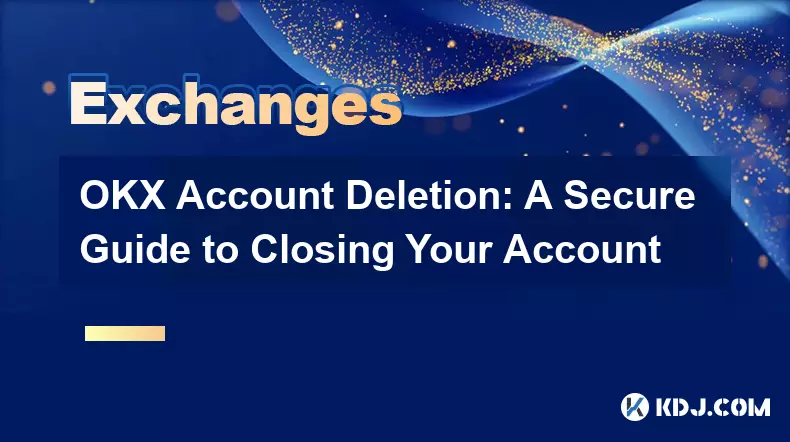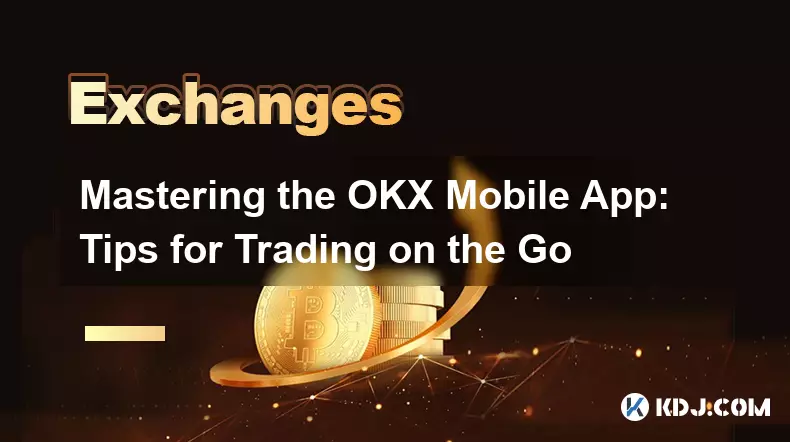-
 bitcoin
bitcoin $102877.190955 USD
1.88% -
 ethereum
ethereum $3430.435064 USD
4.52% -
 tether
tether $0.999264 USD
-0.05% -
 xrp
xrp $2.307310 USD
4.49% -
 bnb
bnb $987.740692 USD
3.82% -
 solana
solana $161.947760 USD
3.97% -
 usd-coin
usd-coin $0.999712 USD
-0.05% -
 tron
tron $0.292810 USD
2.93% -
 dogecoin
dogecoin $0.179738 USD
10.70% -
 cardano
cardano $0.580716 USD
8.75% -
 hyperliquid
hyperliquid $42.463448 USD
8.40% -
 chainlink
chainlink $15.763437 USD
7.05% -
 zcash
zcash $649.595636 USD
17.21% -
 bitcoin-cash
bitcoin-cash $511.610261 USD
7.19% -
 stellar
stellar $0.292537 USD
7.91%
Binance Sub-Accounts: A Guide for Managing Multiple Portfolios
Binance sub-accounts enable streamlined portfolio management with independent trading, granular permissions, and seamless internal transfers—all under centralized control.
Nov 05, 2025 at 12:20 pm

Binance Sub-Accounts: Streamlining Portfolio Management
1. Binance sub-accounts allow users to create multiple accounts under a single master account, enabling better organization and control over different investment strategies. Each sub-account operates independently with its own trading history, balances, and API keys, while still being managed from the central dashboard of the primary account.
2. Traders who manage funds for clients or run proprietary strategies can separate risk exposure by allocating specific capital to individual sub-accounts. This structure supports distinct risk profiles without mixing assets across strategies.
3. The feature is particularly useful for institutional traders, fund managers, or high-volume individuals who need to track performance across various portfolios. By isolating trades within each sub-account, performance attribution becomes clearer and more accurate.
4. Sub-account creation is accessible through the Binance website under the 'Sub-Account Management' section. Users can generate up to 200 sub-accounts per master account, offering significant flexibility in structuring operations.
5. All sub-accounts share the same KYC verification as the main account, eliminating the need for repeated identity checks. However, each sub-account must be activated manually after creation before it can execute trades or hold assets.
Access Control and Permission Settings
1. Binance provides granular permission settings for each sub-account, allowing the master account holder to restrict functionalities such as spot trading, futures trading, withdrawals, and API access. These controls enhance security when delegating trading responsibilities.
2. For example, a portfolio manager may grant a sub-account permission to trade spot markets but disable withdrawal capabilities entirely. This prevents unauthorized movement of funds while still enabling active trading.
3. Permissions can be modified at any time from the master account, ensuring dynamic control based on operational needs or personnel changes. This adaptability makes sub-accounts suitable for both short-term projects and long-term fund management setups.
4. API keys generated within a sub-account inherit its permission scope. If withdrawals are disabled, any application using that API key will not be able to initiate fund transfers, reducing potential attack vectors.
5. Two-factor authentication (2FA) policies apply uniformly across all sub-accounts linked to the same master account, reinforcing overall account security without requiring separate authentication flows.
Fund Transfers and Internal Settlements
1. Funds can be transferred between the master account and its sub-accounts instantly and without fees. This internal settlement system allows for rapid capital allocation in response to market opportunities or strategy rebalancing.
2. Transfers are initiated exclusively from the master account interface, meaning sub-accounts cannot send funds back to the master or to other sub-accounts autonomously. This centralized control minimizes misuse risks.
3. When managing leveraged positions across multiple sub-accounts, the master user can monitor margin levels and transfer additional collateral swiftly to avoid liquidations. This capability is crucial during periods of high volatility.
4. Deposit functionality remains restricted to the master account in most cases. Cryptocurrencies deposited to the master account can then be distributed internally, though some deposit methods may support direct routing to sub-accounts depending on network configurations.
5. Accounting for profit-sharing or fee distribution becomes simpler when each sub-account represents a unique client or strategy. Profits accrued within a sub-account can be periodically withdrawn to the master wallet for external disbursement.
Frequently Asked Questions
Can sub-accounts have different trading fee structures?No, all sub-accounts inherit the fee tier of the master account based on its combined trading volume and BNB balance. Fee discounts or increases apply uniformly across all associated sub-accounts.
Is it possible to trade futures on a sub-account?Yes, futures trading can be enabled for a sub-account if the master account grants the necessary permissions. Once activated, the sub-account can open positions on USDT-margined or coin-margined futures contracts independently.
Are sub-account activities visible to external parties?No, sub-account transactions are private and only accessible to the master account holder through the Binance platform. External observers viewing blockchain data cannot distinguish between master and sub-account activity unless addresses are publicly disclosed.
Can I use third-party tools with Binance sub-accounts?Yes, as long as the sub-account’s API permissions allow it. Many algorithmic trading platforms, portfolio trackers, and tax reporting services support integration with Binance sub-account API keys for automated workflows.
Disclaimer:info@kdj.com
The information provided is not trading advice. kdj.com does not assume any responsibility for any investments made based on the information provided in this article. Cryptocurrencies are highly volatile and it is highly recommended that you invest with caution after thorough research!
If you believe that the content used on this website infringes your copyright, please contact us immediately (info@kdj.com) and we will delete it promptly.
- Ripple (XRP) in 2026: Hold or Fold? A Look at XRP's Future and Emerging DeFi Alternatives
- 2025-11-08 18:35:01
- Zcash ZEC Coin Price Explosion: From Privacy Niche to Center Stage
- 2025-11-08 18:55:01
- Berachain Price Prediction: Navigating the Honeycomb Hype in Crypto
- 2025-11-08 18:55:01
- Arthur Hayes, Gold, and Bitcoin: A Modern Monetary Trinity?
- 2025-11-08 19:15:01
- Shiba Inu's Next Move: Navigating a Shifting Market
- 2025-11-08 19:20:01
- Pakistan's Crypto Crossroads: Balancing Opportunity with Asset-Backed Realities
- 2025-11-08 19:20:01
Related knowledge

Common Mistakes to Avoid on OKX: A Guide for New Traders
Nov 04,2025 at 03:37pm
Understanding the Interface Before Trading1. New traders often jump into placing orders without fully exploring the OKX platform layout. Taking time t...

OKX TradingView Integration: A Guide to Advanced Chart Analysis
Nov 02,2025 at 03:37am
OKX and TradingView: Bridging the Gap for Professional Traders1. OKX, one of the leading cryptocurrency exchanges, has integrated with TradingView to ...

Finding Your OKX Deposit Address: A Quick and Safe Guide
Nov 05,2025 at 01:15pm
Finding Your OKX Deposit Address: A Step-by-Step Process1. Log into your OKX account using your registered credentials. Ensure you are accessing the o...

OKX Savings Guide: A Low-Risk Strategy for Earning Crypto
Nov 05,2025 at 06:55am
Understanding OKX Savings and Its Role in Crypto Earnings1. OKX Savings offers users a straightforward method to earn passive income by leveraging idl...

OKX Account Deletion: A Secure Guide to Closing Your Account
Nov 05,2025 at 08:44am
Understanding the Implications of Account Closure1. Closing your OKX account permanently removes access to all associated trading features, including ...

Mastering the OKX Mobile App: Tips for Trading on the Go
Nov 05,2025 at 01:19am
Streamlined Navigation for Efficient Trading1. The OKX mobile app features a clean and intuitive interface that allows traders to access key functions...

Common Mistakes to Avoid on OKX: A Guide for New Traders
Nov 04,2025 at 03:37pm
Understanding the Interface Before Trading1. New traders often jump into placing orders without fully exploring the OKX platform layout. Taking time t...

OKX TradingView Integration: A Guide to Advanced Chart Analysis
Nov 02,2025 at 03:37am
OKX and TradingView: Bridging the Gap for Professional Traders1. OKX, one of the leading cryptocurrency exchanges, has integrated with TradingView to ...

Finding Your OKX Deposit Address: A Quick and Safe Guide
Nov 05,2025 at 01:15pm
Finding Your OKX Deposit Address: A Step-by-Step Process1. Log into your OKX account using your registered credentials. Ensure you are accessing the o...

OKX Savings Guide: A Low-Risk Strategy for Earning Crypto
Nov 05,2025 at 06:55am
Understanding OKX Savings and Its Role in Crypto Earnings1. OKX Savings offers users a straightforward method to earn passive income by leveraging idl...

OKX Account Deletion: A Secure Guide to Closing Your Account
Nov 05,2025 at 08:44am
Understanding the Implications of Account Closure1. Closing your OKX account permanently removes access to all associated trading features, including ...

Mastering the OKX Mobile App: Tips for Trading on the Go
Nov 05,2025 at 01:19am
Streamlined Navigation for Efficient Trading1. The OKX mobile app features a clean and intuitive interface that allows traders to access key functions...
See all articles





















![The Graph Price Prediction [GRT Crypto Price News Today] The Graph Price Prediction [GRT Crypto Price News Today]](/uploads/2025/11/07/cryptocurrencies-news/videos/690d4df44fe69_image_500_375.webp)



















































